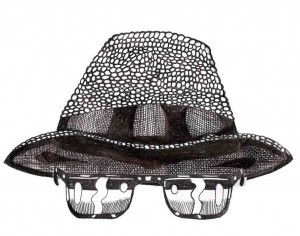I just returned from New York and met up with my good friend Zeke Schein from Matt Umanov Guitars. Zeke sold me my first ever uke, a Collings pre production concert. This one purchase was a trigger for everything that followed and without it there would be no “Small Change Diaries” no 40+ songs written, no live gigs in the UK and overseas!
On this trip Zeke mentioned a rare Martin 1920s soprano ukulele that was for sale, described below
1920s Martin Style 2 Uke
An extremely early Martin ukulele and one of their higher-grade and rarer models, from 1921 or possibly even earlier. According to correspondence from Tom Walsh, co-author of the fabulous and most authoritative book on the subject The Martin Ukulele, “The lighter colored nut and saddle suggest it is early 20s or earlier, but the real giveaway is the position marks at the 5-7-9th frets. Martin switched to inlays at frets 5-7-10 by 1921 at the latest. Another sign of age is the fact that it never had patent pegs. The style 2 ukuleles got patent pegs in 1922″. In absolutely beautiful condition with no cracks or repairs anywhere and none of the usual signs of overly enthusiastic playing. The bar frets are original with virtually no wear. It has white celluloid tuning pegs, which are most likely much older very professional replacements, to match the white celluloid body bindings.
I have always wanted to own a Martin instrument, but to date have never been totally convinced. There are two notable exceptions, the first being a guitar Martin Simpson showed me and now this 1920s Martin soprano. I’m not an advocate of “old = great” but this particular ukulele which is in excellent condition sounds very unlike anything else I have played to date. It has a great tone and plays really well. Its also almost 100 years old and will be used in the studio for future recordings. It also comes with an original case which is like a violin case. I have never seen a 1920s Martin soprano before and certainly not one in such great condition. Its a wonderful sounding instrument and a joy to play.
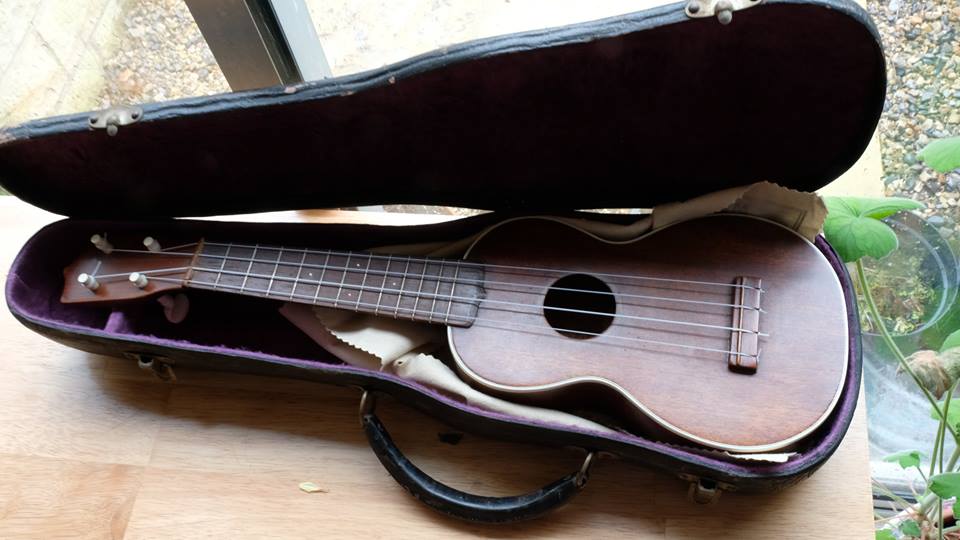
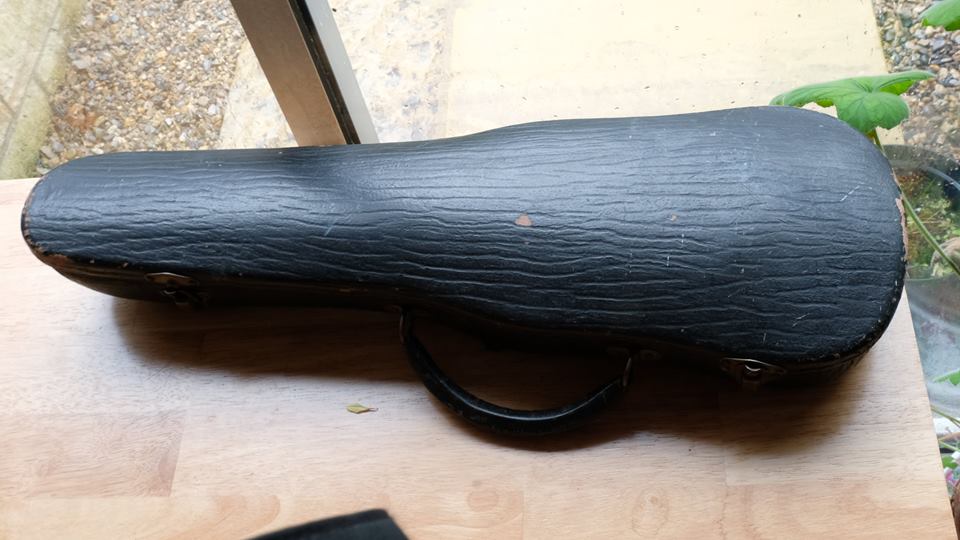
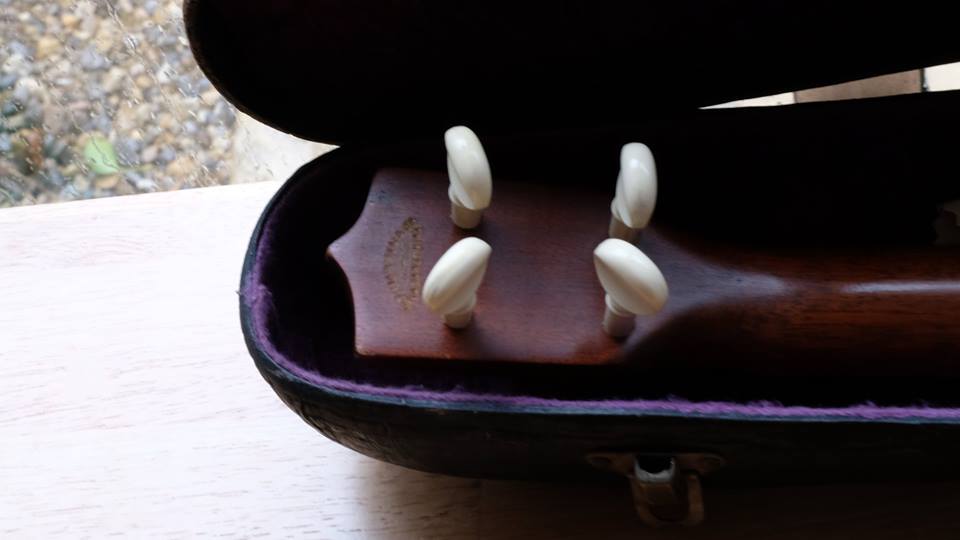
Zeke is also the author of a soon to be released book “Portrait of a Phantom”
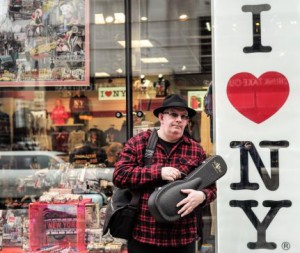 There’s an old saying “You have to kiss a lot of frogs to find a prince” I feel the same way about instruments. Over the years, I have bought a lot of electric and acoustic instruments and before purchasing, have played a great deal more. Prior to being totally seduced by the ukulele, I was (and still am but to a lesser extent) a guitar collector. I started out collecting electric instruments and really wanted to find an acoustic.
There’s an old saying “You have to kiss a lot of frogs to find a prince” I feel the same way about instruments. Over the years, I have bought a lot of electric and acoustic instruments and before purchasing, have played a great deal more. Prior to being totally seduced by the ukulele, I was (and still am but to a lesser extent) a guitar collector. I started out collecting electric instruments and really wanted to find an acoustic.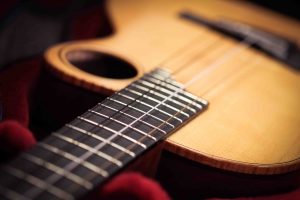 The first ukulele I bought was a pre-production Collings UC1 from Zeke at Matt Umanov Guitars in New York. I have always loved Collings instruments and never found one that didn’t sound or play brilliantly. I had no idea how to play this uke or even how to tune it, but it sounded brilliant. Another time in Heartman Guitars in Tokyo I again tried out 20+ ukuleles before settling on a Shimo Comet 3 tenor that was used on The Small Change Diaries first album. It was quite simply by far the best sounding and playing instrument in the store and since then I have commissioned and now possess a sister Comet with Dtar pickup that’s being used on the new album due for release in 2017.
The first ukulele I bought was a pre-production Collings UC1 from Zeke at Matt Umanov Guitars in New York. I have always loved Collings instruments and never found one that didn’t sound or play brilliantly. I had no idea how to play this uke or even how to tune it, but it sounded brilliant. Another time in Heartman Guitars in Tokyo I again tried out 20+ ukuleles before settling on a Shimo Comet 3 tenor that was used on The Small Change Diaries first album. It was quite simply by far the best sounding and playing instrument in the store and since then I have commissioned and now possess a sister Comet with Dtar pickup that’s being used on the new album due for release in 2017.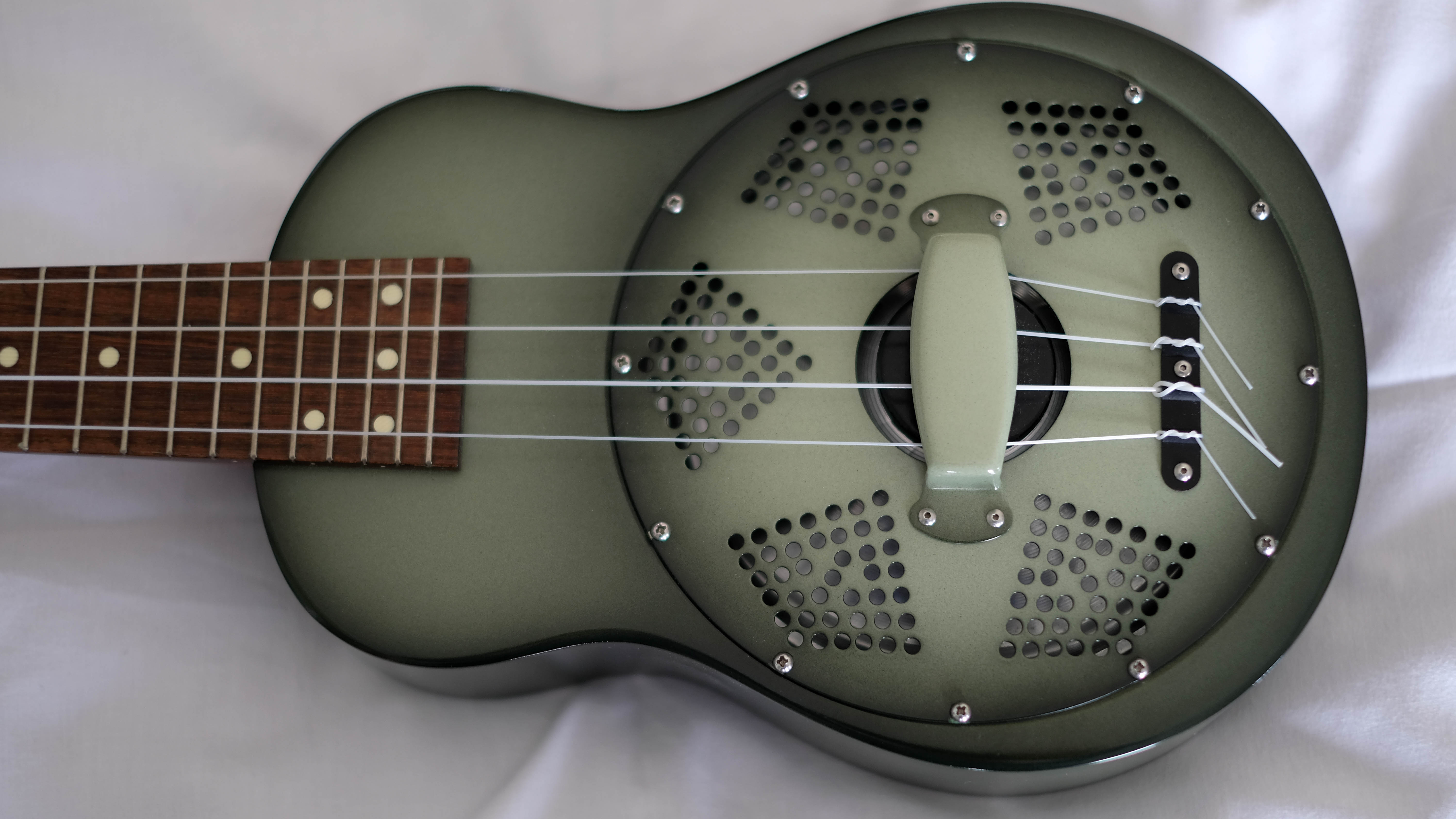
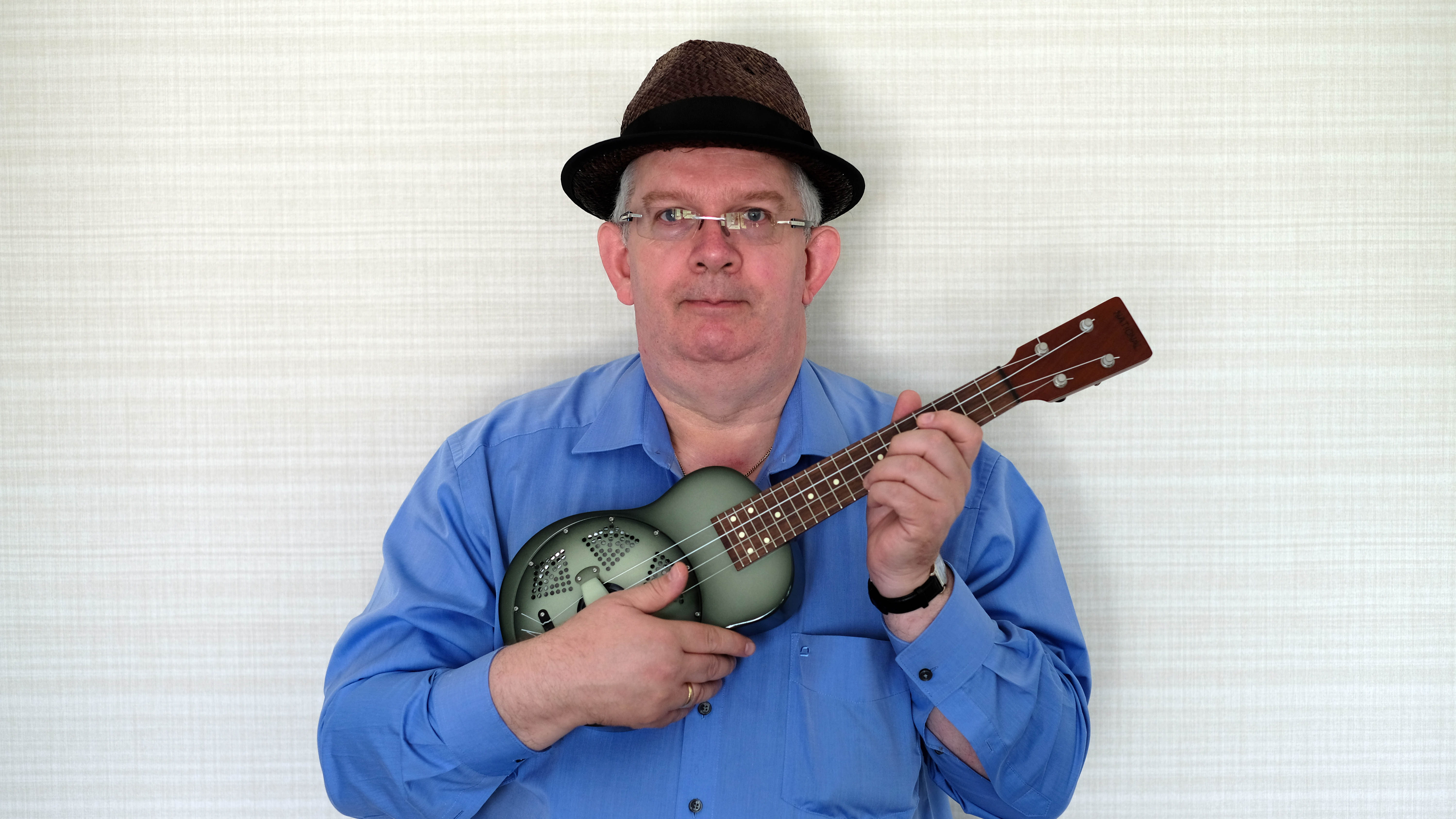
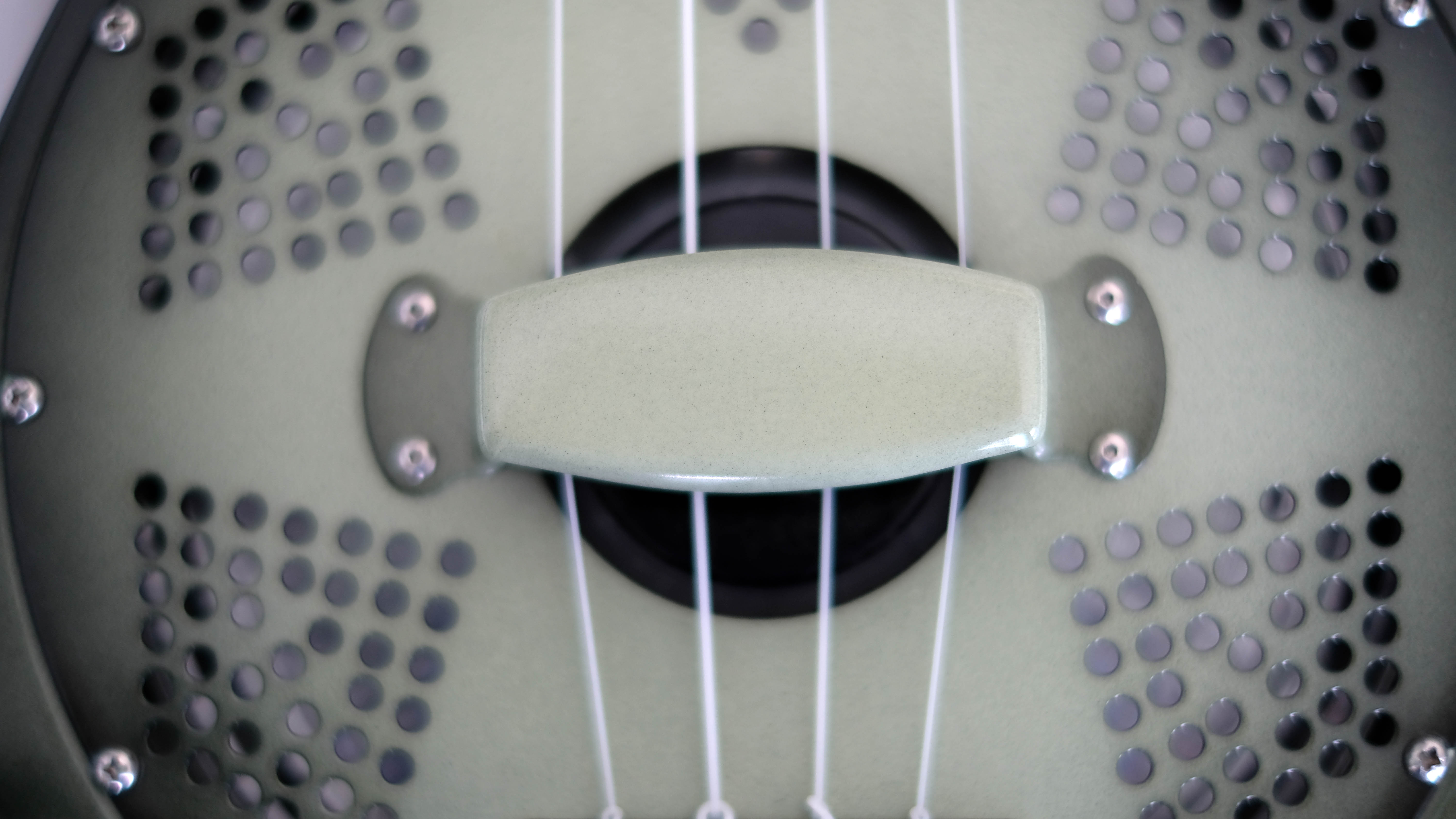
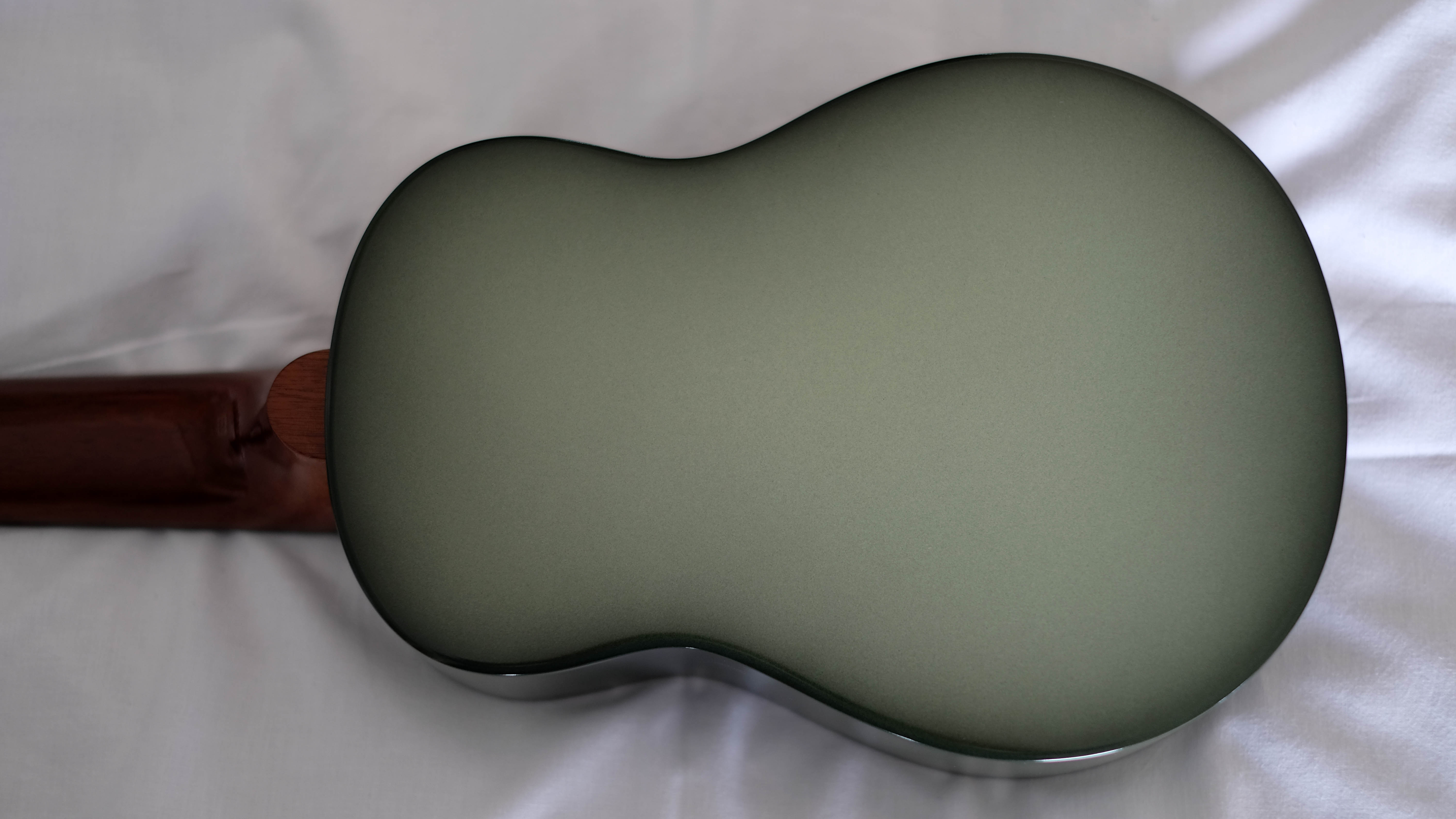

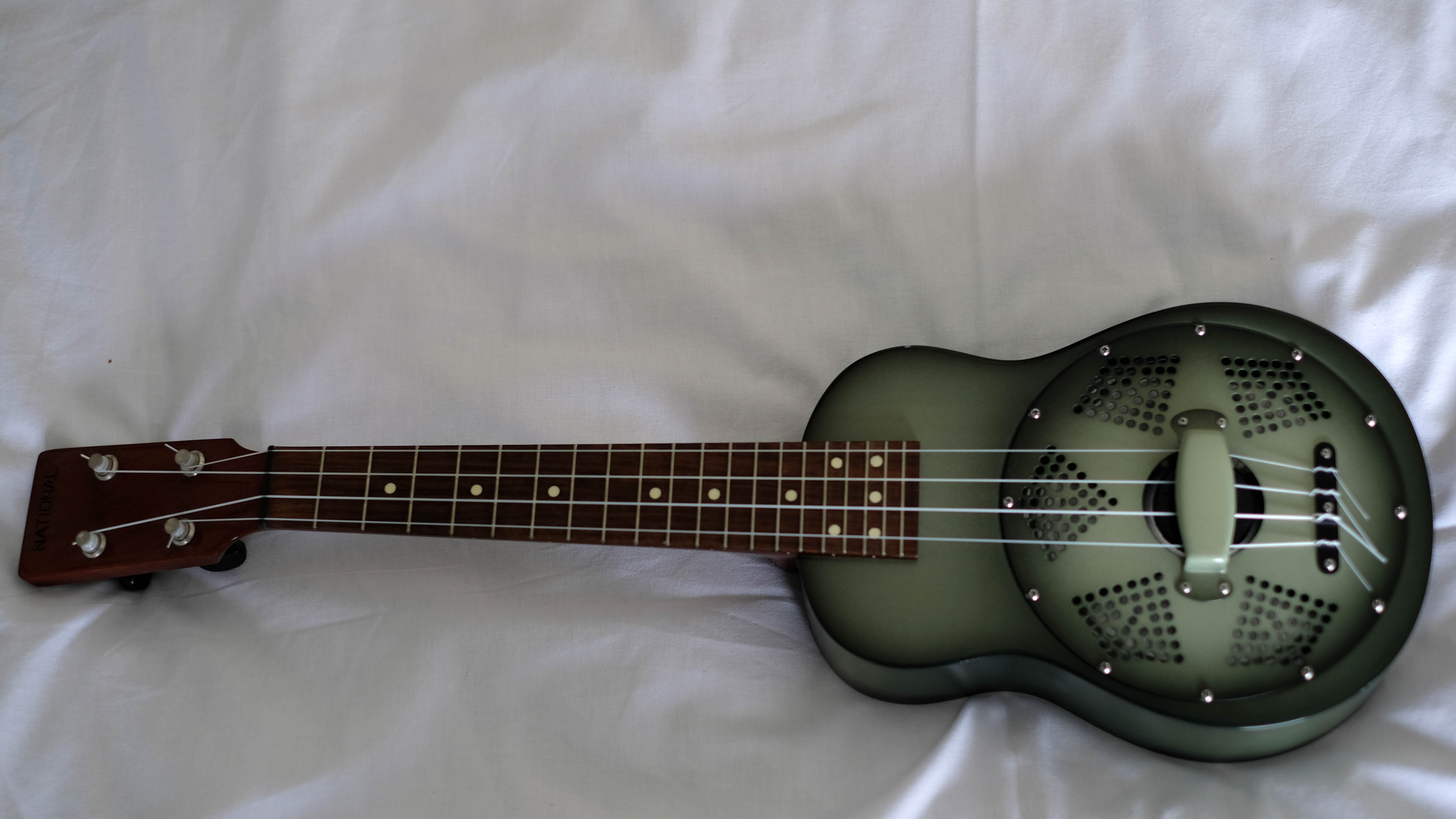
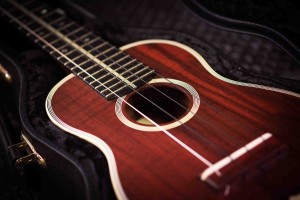 There’s a lot of debate about strings and often people are polarized into very set opinions. My own explorations across 20 different ukes of all types and constructions suggest that it’s all about combinations. I did similar explorations with electric guitars testing all types of pickups. With the ukulele there are less variable factors, but I have settled in McIntyre feather pickups as the default pickup for live playing. These work great with Fire Eye Red units or straight into a Henriksen Bud amp, which just amplifies the natural sound of the instrument.
There’s a lot of debate about strings and often people are polarized into very set opinions. My own explorations across 20 different ukes of all types and constructions suggest that it’s all about combinations. I did similar explorations with electric guitars testing all types of pickups. With the ukulele there are less variable factors, but I have settled in McIntyre feather pickups as the default pickup for live playing. These work great with Fire Eye Red units or straight into a Henriksen Bud amp, which just amplifies the natural sound of the instrument.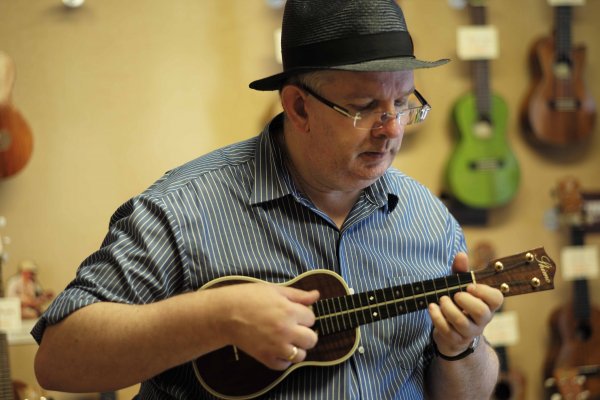
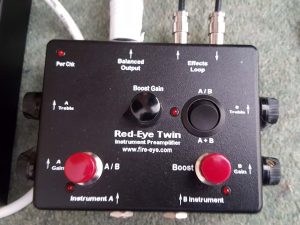 Perhaps one of the simplest solutions when playing the ukulele is to DI the instrument straight into the PA. This can work, BUT of course it depends massively on the quality of the DI box, the leads to the PA (yes leads can vary massively) and ultimately “the human factor” The last element can make the biggest difference of course, but this article assumes a basic level of competence for such scenarios! Over the years I have tried all manner of DI boxes and preamps and have discovered that there is a massive difference between different units. The very best ones are Fire Eye Red units and these are made in Austin Texas and built to the highest standards. Not only are they built like tanks, but they simply sound better than everything else I have come across. Our producer and longstanding tour manager for many established artists such as Ali Campbell agrees fully with this view. I blogged on Fire Eye units previously here –
Perhaps one of the simplest solutions when playing the ukulele is to DI the instrument straight into the PA. This can work, BUT of course it depends massively on the quality of the DI box, the leads to the PA (yes leads can vary massively) and ultimately “the human factor” The last element can make the biggest difference of course, but this article assumes a basic level of competence for such scenarios! Over the years I have tried all manner of DI boxes and preamps and have discovered that there is a massive difference between different units. The very best ones are Fire Eye Red units and these are made in Austin Texas and built to the highest standards. Not only are they built like tanks, but they simply sound better than everything else I have come across. Our producer and longstanding tour manager for many established artists such as Ali Campbell agrees fully with this view. I blogged on Fire Eye units previously here – 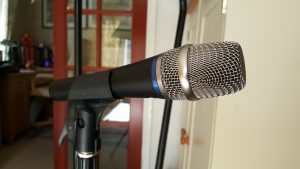 Another simple solution is to simply mic the ukulele. This removes the need for pickups, DI boxes, preamps, amps etc. It’s an attractive simple solution and many musicians swear by it. The old standard industry SM58 and SM57 mics have worked for decades. As with all solutions there will always be a trade off in many respects. In this instance the performer is limited in terms of movement on stage, but it’s simple and simple is no bad thing! Move close to increase volume, move away to reduce volume. Personally I prefer Heil mics, which to my ears sound better than SM58S.
Another simple solution is to simply mic the ukulele. This removes the need for pickups, DI boxes, preamps, amps etc. It’s an attractive simple solution and many musicians swear by it. The old standard industry SM58 and SM57 mics have worked for decades. As with all solutions there will always be a trade off in many respects. In this instance the performer is limited in terms of movement on stage, but it’s simple and simple is no bad thing! Move close to increase volume, move away to reduce volume. Personally I prefer Heil mics, which to my ears sound better than SM58S.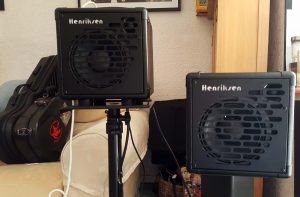 I have spent 18 months researching acoustic amp options. Clearly I am not the only person looking into this. Jake Shimabukuro was also asking about this on social media. Up until recently I would only use Schertler Unico units. These are now no longer in production and I suspect one reason is that they are pretty expensive for many working musicians and they are heavy! I have a classic Unico and a Unico Deluxe. Crucially these don’t colour the sound and simply reproduce the sonic quality of the instrument. I have owned AER, Marshall and other respectable units that are perfectly functional but don’t sound as great. In recent weeks I tried out and bought a Henriksen Bud amp with an extension cab. To say that I am pleased with this unit is an understatement. The Bud unit is a dream to work with. It sounds fantastic and is half the weight of the Schertler. The best combination is using the Bud and the Schertler in combination. This gives a big sound with lots of headroom and again crucially just amplifies the instrument, so you hear the natural acoustic sound only louder.
I have spent 18 months researching acoustic amp options. Clearly I am not the only person looking into this. Jake Shimabukuro was also asking about this on social media. Up until recently I would only use Schertler Unico units. These are now no longer in production and I suspect one reason is that they are pretty expensive for many working musicians and they are heavy! I have a classic Unico and a Unico Deluxe. Crucially these don’t colour the sound and simply reproduce the sonic quality of the instrument. I have owned AER, Marshall and other respectable units that are perfectly functional but don’t sound as great. In recent weeks I tried out and bought a Henriksen Bud amp with an extension cab. To say that I am pleased with this unit is an understatement. The Bud unit is a dream to work with. It sounds fantastic and is half the weight of the Schertler. The best combination is using the Bud and the Schertler in combination. This gives a big sound with lots of headroom and again crucially just amplifies the instrument, so you hear the natural acoustic sound only louder.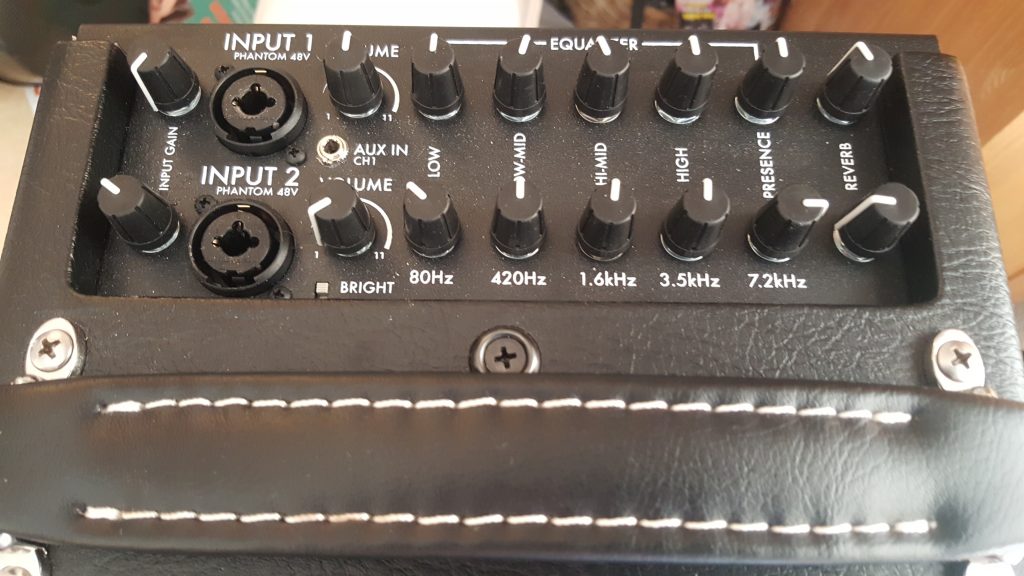
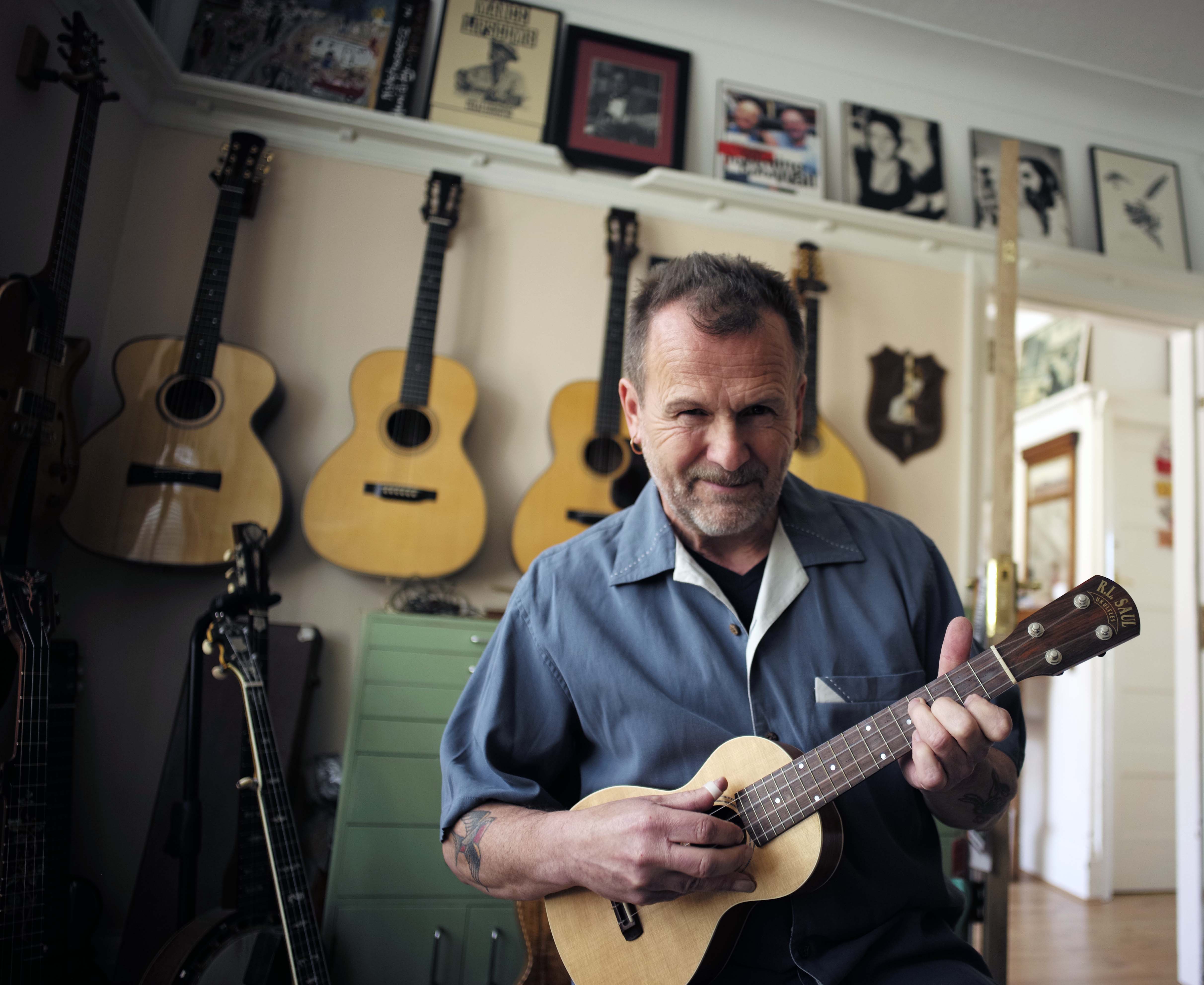 Yesterday I spent the morning interviewing Martin Simpson on playing the ukulele and the art of songwriting. This was a mind-blowing interview where Martin talked extensively about the need for great care in creating music. Many know him for his guitar playing and banjo work, BUT having known him personally for many years I can confirm that he is a brilliant musician who plays all manner of instruments including the ukulele.
Yesterday I spent the morning interviewing Martin Simpson on playing the ukulele and the art of songwriting. This was a mind-blowing interview where Martin talked extensively about the need for great care in creating music. Many know him for his guitar playing and banjo work, BUT having known him personally for many years I can confirm that he is a brilliant musician who plays all manner of instruments including the ukulele.
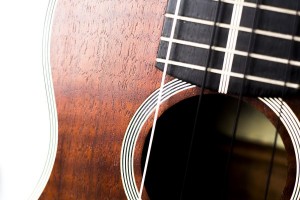 There is something wonderfully simple about these (mostly) four string instruments and I find them totally impossible to resist. It appears that I am also not the only one to discover this attraction and to my great amusement I was recently invited to the UAS (ukulele acquisition syndrome) FB group which is doing little to curb my buying habits! In recent times I have been putting UF-07/ Ukulele Feather pickups into some instruments. These are recommended by Bill Collings and I can report that they are excellent.
There is something wonderfully simple about these (mostly) four string instruments and I find them totally impossible to resist. It appears that I am also not the only one to discover this attraction and to my great amusement I was recently invited to the UAS (ukulele acquisition syndrome) FB group which is doing little to curb my buying habits! In recent times I have been putting UF-07/ Ukulele Feather pickups into some instruments. These are recommended by Bill Collings and I can report that they are excellent.